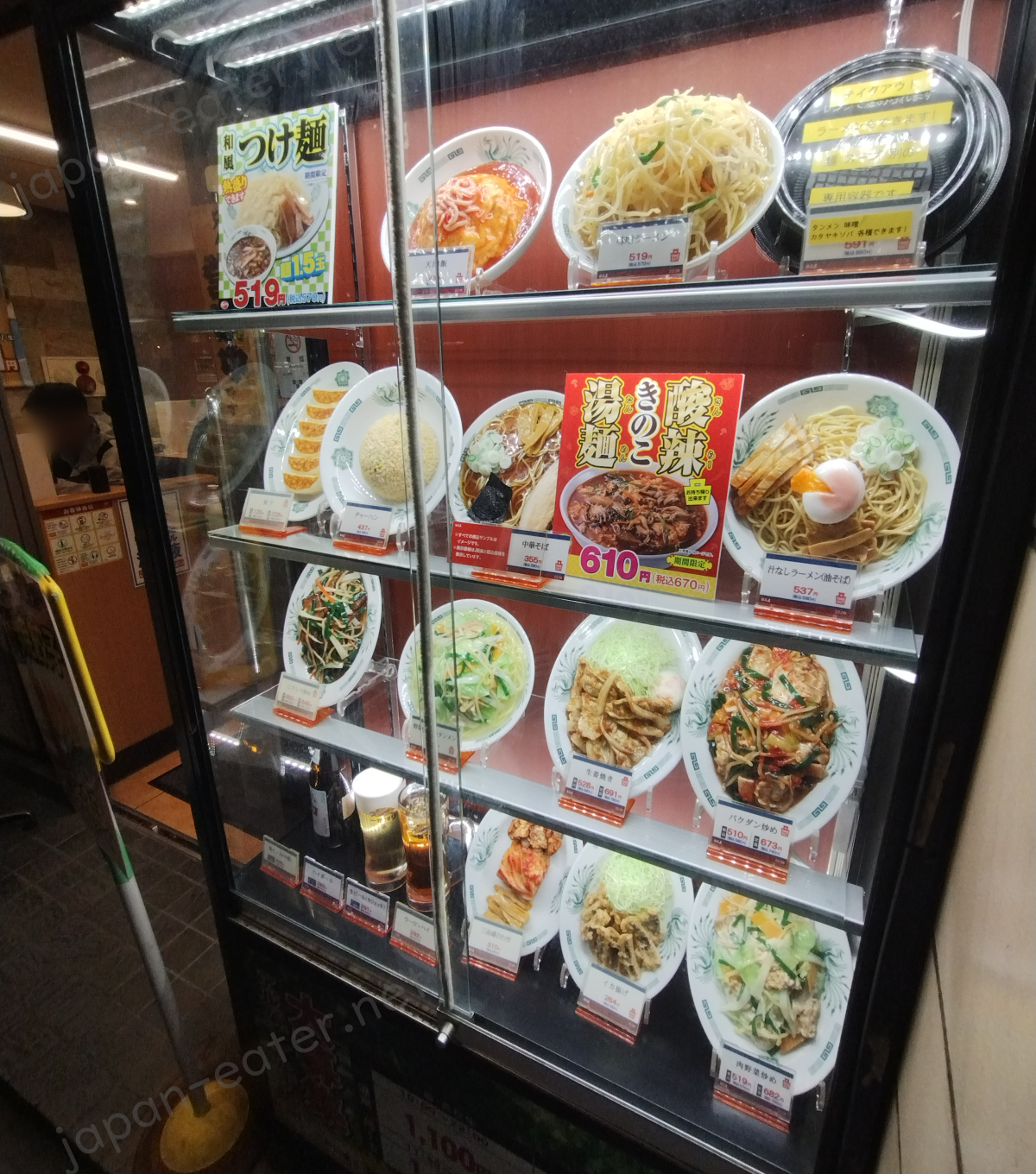Convenience Store (Konbini)
Small stores which sell food, beverages, snacks, alcohols, magazines&books, and many others. You can find konbini anywhere in Japan. There are more than 55,000 stores in Japan as of the end of 2020.
They also offer variety of services such as ATM, shipment&receipt of delivery, bill payment, free Wi-Fi, and so on.
For many Japanese people, konbini is a necessary infrastructure for their daily lives.
Family Restaurant (Famiresu)
Family restaurants are a type of restaurant in Japan. There are many chains of family restaurants, such as Royal Host, Cafe Gusto, Joyfull, Jonathan’s, Denny’s, Coco’s, and Saizeriya. While you may recognize some of these restaurants, their menus are quite different from their Western counterparts.
People wanting to experience Japan may be tempted to pass going to a family restaurant because of it’s non-Japanese appearance. However, you should try dining at one at least once because it is an interesting Japanese experience.
Some unique things about family restaurants include:
- A mix of Western and Japanese dishes: Family restaurants usually serve Japanese-style Western food as well as some common Japanese dishes. Because the menu is made for children to enjoy, there are many easy to eat and enjoy dishes. If you haven’t eaten Japanese cuisine before, this might be a good start.
- A call button: Don’t wait for a server to come and introduce themselves or else you’ll never eat! Most family restaurants (and even some non-family restaurants) have a button you push to call a server over. When they bring your food, they’ll probably place the receipt in a small box on the table. But don’t worry, you can still order more food.
- A drink bar: Instead of ordering one soda, you can instead pay a couple hundred yen and get access to the drink bar (a fountain drink machine). You can get as many refills as you want. Common options are cola, Sprite/7-up, ginger ale, fruit juice, ice coffee, cold teas, fruit flavour soda (usually grape, orange, and melon) and sometimes even hot drinks like coffee and tea! You can still get water for free or buy other drinks if you want.
- Toys for sale: Since the restaurants are for the whole family, there are often toys for sale and gatcha machines at the entrance. Sometimes, there are even food items and kits for you to make at home!
The 23 Wards and Other Divisions
Many people’s image of Tokyo is actually only the downtown area, or rather the 23 wards. “Wards” are areas in big cities, which take the suffix 区 (ku). The 23 wards in Tokyo include familiar areas such as Shinjuku-ku, Shibuya-ku, Setagaya-ku, and Chuo-ku.
However the 23 wards make up about only a third of Tokyo. To the west of the 23 wards, there are many cities [市] (shi), towns [町] (machi), and villages [村] (mura / son).
As you move away from the 23 wards and out of the city, you'll find more suburbs and, on the west end, even rural areas!
Of course this means that there are less train lines, but there are a few. In fact you can go from Shinjuku-ku to Okatama-machi in a couple of hours.
There are a few islands to the south that are part of Tokyo, despite Kanagawa prefecture being closer to them. You can take a ferry over to the islands.
Seasonal Flavours
Perhaps because Japan is an island country that shares no borders with other countries, the foods and flavours that are “in” change with the seasons.
While you can find some seasonal flavours all year round at certain stores, you’ll see cafés and restaurants advertising specialty drinks and desserts and stores selling unique snacks depending on the time of year.
Some notable seasonal flavours are:
- Strawberries (mid/late winter)
- Cherry Blossom (early spring)
- Maccha (spring)
- Mint (early summer)
- Pineapple, Lychee, Lemon, Watermelon (summer)
- Sweet potato (fall) Chestnut (fall)
Food Display
One neat thing about Japan is that some restaurants and cafes will have food displays.
The food is not real, but rather accurate replicas.
Usually only the main and most popular items are displayed.
These displays are very useful because you can see the dish’s name, size, and price before even stepping inside the restaurant.

Souvenir Treats
Whether you're at the grocery store or at a specific food shop, you may come across rather expensive boxes of individually packaged snacks or sweets.
The treat are only a small portion but the packaging is very attractive. This is because these treats are for souvenirs or gifts. In Japan, giving souvenirs is quite common - in some situations, even expected.
Perhaps to avoid burdening someone with small trinkets, consumable goods are usually given as souvenirs to acquaintances as opposed to key chains, clothing, etc.
So these little packaged treats cover everything - fresh, hygienic, and easy to distribute!
